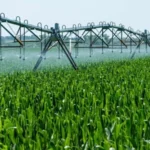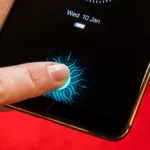Inverters are out there to provide you with a power supply when the power cut is happening, right? But oftentimes, it has been seen that some inverters don’t come back on even when the power cut is over. That’s mainly the problem with some older inverters, but still, let’s see what could be causing this and how to fix it, shall we?
Common Inverter Problems and Their Solutions

1. Battery Issues
The battery is the core of any inverter out there, and you probably know that already, correct? Well, if the inverter fails after the power cut, the battery is the main culprit, you know? It may be undercharged possibly due to incomplete recharging. To check this one may have to measure the voltage of the battery using the multimeter. Like, for example, if you see that the multimeter is showing a reading that is way too low, it means that you have to recharge the battery aka the inverter well, and that may cause the problem after a power cut. Also, it is very important to check the terminals for corrosion which may occur and cleaning them with a mixture of baking soda and water, and make sure that connections are secure.
2. Electrical and Connection Issues
Loose connections can happen that can easily affect the inverter’s performance, that’s for sure, and one of the very common possibilities. Check all the cables and connections, to make sure they’re tight and free of damage. Look for frayed wires or any signs of wear. Sometimes a faulty power switch can cause the issue, test it and if it is not working, replace it.
3. Inverter Reset
Sometimes inverters need simple things to reset like rebooting a computer, you know? Usually, the instructions are to turn it off, unplug all devices, and disconnect it from the power source. Let it sit in that state for a couple of minutes, then plug it back in, and turn it on again. This reset often can clear minor problems and help get the unit operational again.
4. Overheating
Overheating is one of the most frequent issues as well which often occur because of poor air circulation, clogged ventilation systems, and similar factors. And yes, this can very well cause your inverter to not work at all. First of all, make sure you unplug the main unit from the socket and clean the debris or dust build up around the fan given in your inverter. In addition, an inverter should be placed in a cool, sufficiently ventilated, and away from the heat sources and direct sunlight. To be honest, yes, overheating can be quite harmful, therefore it is essential to ensure a proper flow of cool air through the unit.
5. Mechanical Failures
Over the course of time, cooling fans, capacitors, or other internal components may stop working altogether. Some specific signs, such as unusual sounds or constant shutdowns, if they occur, you’ll definitely face situations like this one where the inverter is not working after a power cut, you know? As for minor parts such as fans, they can easily be replaced. However, if the issues are more complex, you should definitely call a professional.
6. Tripped Inverter
When the system trips, if the inverter has a reset switch, use it. The most common reason for overload is when too many devices are connected simultaneously, you know? Therefore, to solve this problem, it is necessary to decrease the load and then reset the inverter.
7. Error Codes and Alarms
Most recent inverters have the function of displaying error codes when problems occur. The explanation of each code can typically be found in the manual. The most frequently occurring ones are: insufficient battery level, high voltage, and internal fault. Most of the time, go with what is displayed and treat the issue from there, or just reset it all together, and you’ll be good to go.

